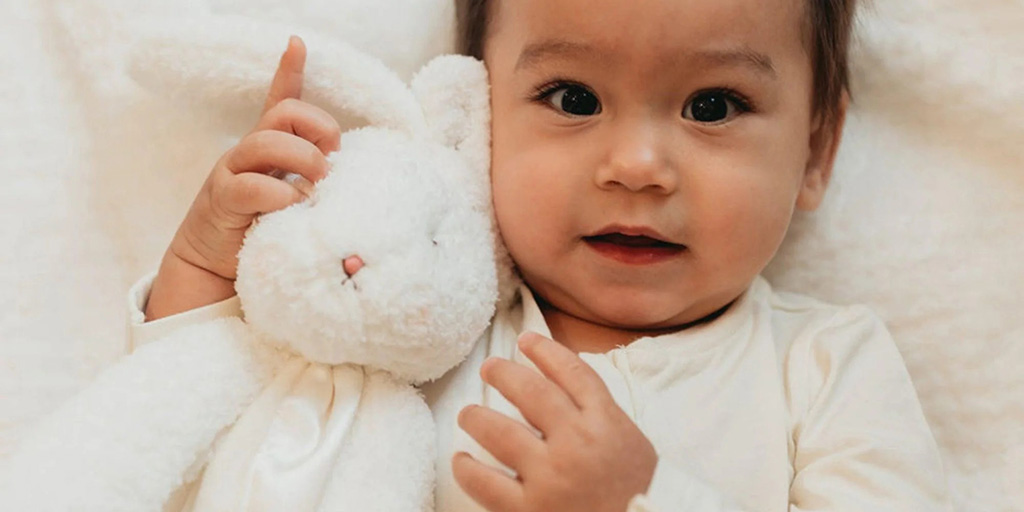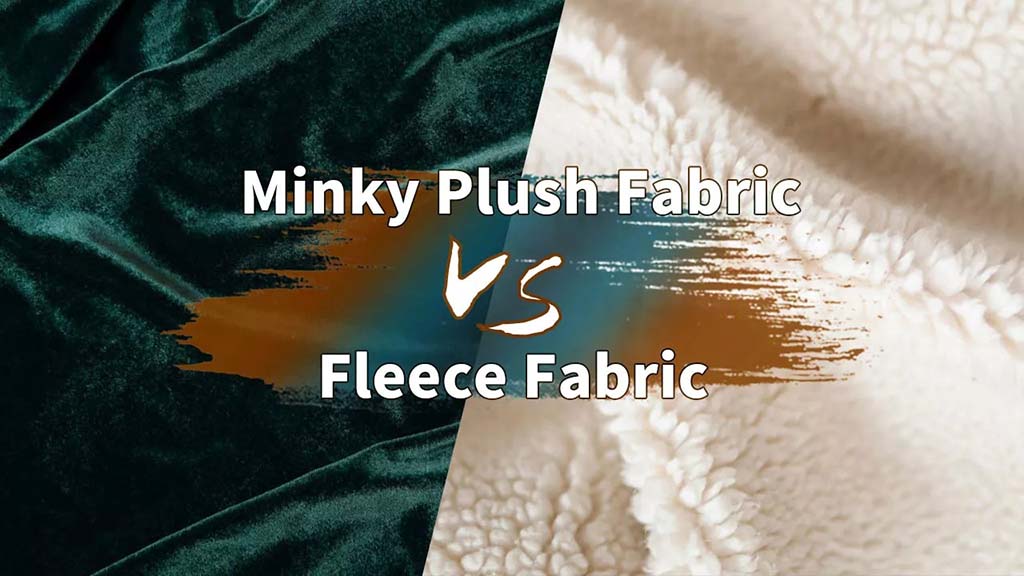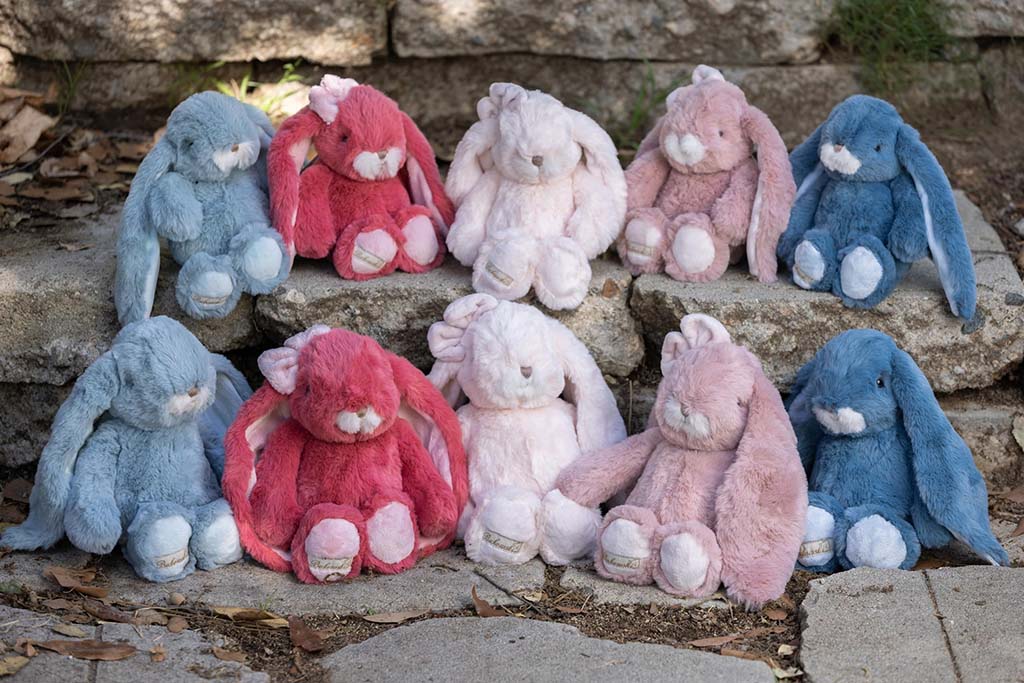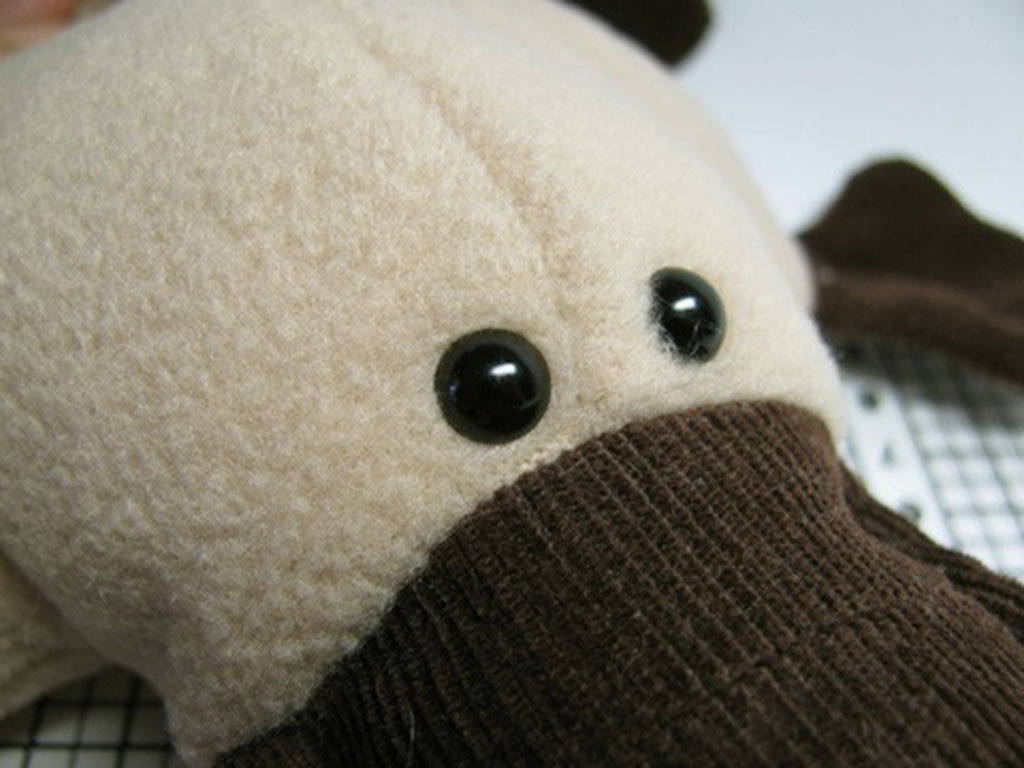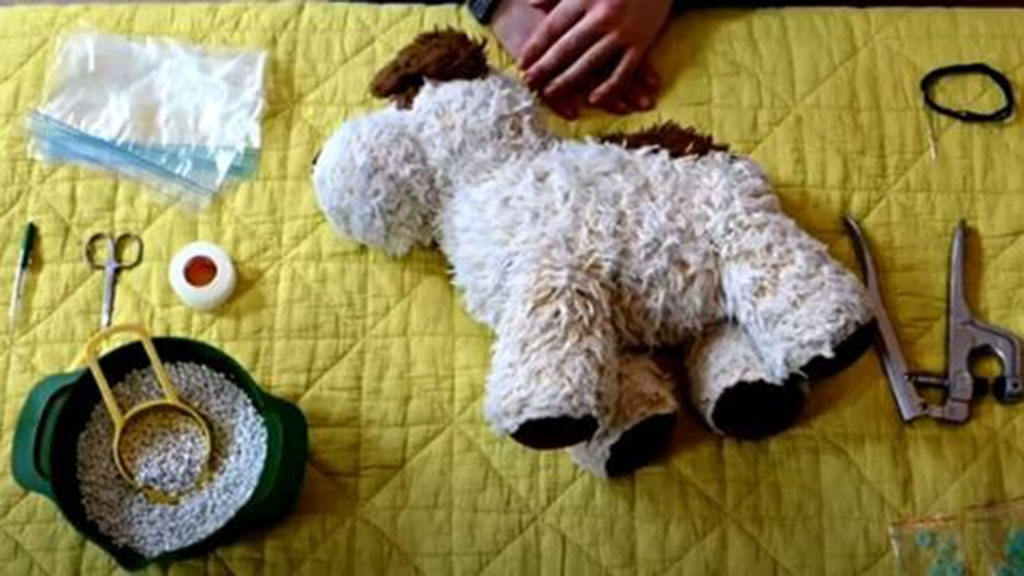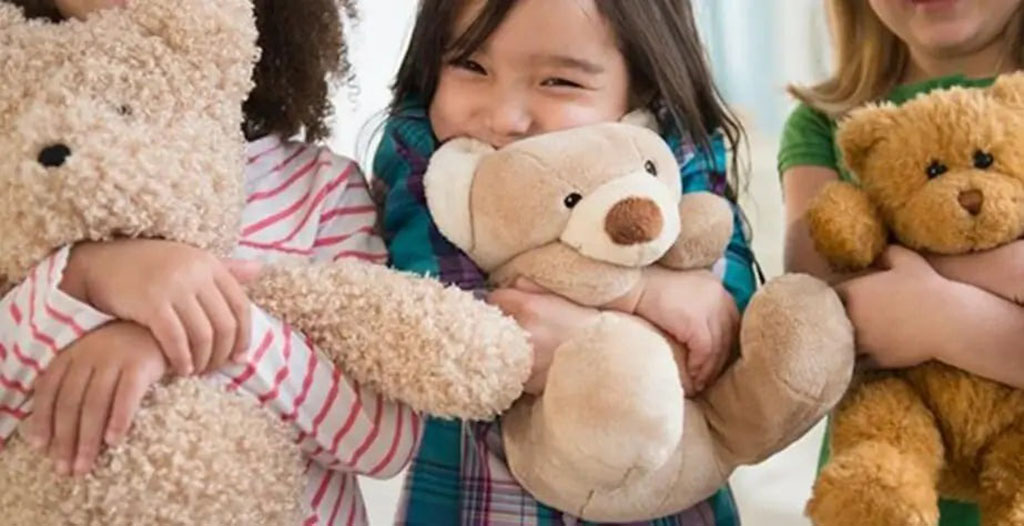I’m Amanda from Kinwin in China. We manufacture baby-safe plush toys for global buyers. Parents want soft and cute. Retailers want reliable and compliant. As manufacturers, we must deliver both. In this guide, I explain the fabric choices that keep babies safe, feel good in the hand, wash well at home, and pass compliance tests—using simple, clear English.
The “best” fabric for baby plush is not one single material. It is a spec: fiber type, pile, backing construction, GSM, finishing, and dyeing—plus how all of these behave during sewing, washing, and daily use. When these pieces work together, you get cuddly softness and strong safety performance with fewer returns.
What fabric properties ensure infant safety—fiber type, pile length, shedding control, and washability?

For baby SKUs, we want soft touch, low lint, strong seams, and easy washing. Fiber type sets the baseline; pile and finishing control shedding; wash care keeps the toy clean at home. Materials must be skin-friendly, resist color bleed (saliva/sweat), and avoid loose fibers that could enter a child’s mouth. We also label care clearly so families do not overheat or damage the toy in laundry.
Table 1 — Safety-Critical Fabric Targets (1/5)
| Property | Baby-Safe Target | Why It Matters | How We Achieve It |
|---|---|---|---|
| Fiber type | Skin-friendly polyester or organic cotton; no irritants | Reduces allergy/irritation risk | Approved supplier lists; OEKO-TEX options |
| Pile length | Short/medium (1–6 mm) | Low lint; less face-matting | Shearing + quality control on pile height |
| Shedding control | Minimal fuzz/lint | Prevents ingestion/irritation | Low-shear raising; tape-pull checks |
| Washability | Gentle cycle + air dry | Hygiene and long life | Reinforced seams; stable dyes/finishes |
| Colorfastness | Pass saliva/sweat/wash | No dye transfer to mouth/skin | Reactive/low-VOC systems; test by lot |
Which baby-appropriate fabrics perform best: organic cotton velour/terry, short-pile minky microfleece, velboa, or muslin blends?

Each option brings a different mix of softness, durability, and cost. For under-3 SKUs, we lean to short-pile surfaces with low lint and good colorfastness. Organic cotton wins on story and breathability; premium minky wins on silky handfeel and photo appeal; velboa gives stable structure; muslin blends support light summer ranges.
Table 2 — Baby Fabric Options Compared (2/5)
| Fabric | Touch/Look | Pros | Considerations | Best Use |
|---|---|---|---|---|
| Organic cotton velour/terry | Cozy, matte | Natural story, breathable, trusted by parents | Slower drying; may shrink if not controlled | Infant loveys, teething-age plush |
| Short-pile minky microfleece | Silky, subtle sheen | Ultra-soft handfeel, low lint when sheared | More sewing control needed; slightly higher cost | Premium cuddle animals, giftable SKUs |
| Velboa (short pile) | Smooth, tidy profile | Stable for cut-and-sew, holds shape well | Can feel less “buttery” than minky | Shapes with small parts and edges |
| Muslin blends (cotton/viscose) | Airy, breathable | Lightweight summer lines, natural feel | Not ideal for long pile plush; needs backing care | Hybrid plush/blanket toys, ears/accents |
My quick rule:
- Premium cuddle feel, photo-driven retail: short-pile minky.
- Natural story and breathability: organic cotton velour/terry.
- Shape control and tidy edges: velboa.
- Light seasonal accents: muslin blends.
How do backing construction, GSM, and stretch affect seam strength, pattern yield, and shape retention for baby SKUs?

A fabric’s backing and GSM (weight) decide how it behaves on the machine and after wash. Too much stretch can twist small parts; too little can feel stiff. We balance operator speed with shape accuracy and seam security. For baby toys, softer is good, but seam strength is non-negotiable.
Table 3 — Construction & Handling Guide (3/5)
| Parameter | Recommended Range for Baby Plush | What Improves | Watchouts |
|---|---|---|---|
| Backing knit density | Medium-tight | Seam bite and stitch holding | Too tight reduces drape; too open causes slippage |
| GSM (finished) | ~180–280 gsm (short pile) | Shape retention, perceived quality | Very high GSM may trap heat or feel bulky |
| Stretch (2-way) | Low–moderate | Cutting accuracy, fewer distortions | High stretch demands stabilizers/tricot tape |
| Nap control | Single-direction nap | Consistent color/shade | Mixed nap wastes yield and confuses operators |
| Edge stability | Slightly firm edge | Safer small parts, clean curves | Over-firm edges may feel rough on cheeks |
Sewing tips we use in-house: walking foot for slippery minky, micro-tex needles, shorter stitch to avoid tunneling, tricot tape at stress points (neck, limb joints), and pre-notch on curves for symmetry.
Which finishing and dyeing choices—low-shear raising, heat-setting, softeners, and low-VOC/reactive dyes—optimize softness and safety?

Finishing sets handfeel and lint control; dyeing sets fastness and chemical safety. For baby SKUs, we prefer low-shear raising (keeps pile short and even), controlled shearing, and heat-setting for stability. For dyes, we choose low-VOC systems and reactive or disperse recipes proven in saliva/sweat tests. Softeners should be child-safe and non-greasy, so the fabric remains breathable and easy to clean.
Table 4 — Finishing & Dyeing Map (4/5)
| Process | Baby-Safe Purpose | Result When Done Well | Red Flags |
|---|---|---|---|
| Low-shear raising | Reduce fuzz while keeping softness | Smooth touch, low shedding | Over-raised = lint issues |
| Precision shearing | Control pile height/clean face | Tidy look, safe short pile | Uneven shear = patchy color |
| Heat-setting | Stabilize size/nap | Better seam stability, less torquing | Over-set = stiff hand |
| Low-VOC/reactive dyes | Colorfast, mouth-safe | Pass saliva/sweat; bright colors | Off-spec batches may bleed |
| Child-safe softener | Soft feel without residue | Easy washing; no film | Greasy film attracts lint/dust |
How are compliance and durability validated (EN71-3, CPSIA, REACH, OEKO-TEX; saliva/sweat colorfastness, pilling/abrasion tests)?

Compliance is about inputs and testing, not fabric names. We validate every color-lot and critical trim. For under-3, we focus on chemicals (EN71-3/CPSIA/REACH), colorfastness (saliva/sweat), mechanical strength (seams), and wear (pilling/abrasion). We also verify wash durability so parents can keep the toy clean without losing softness.
Table 5 — Baby Plush Test Matrix (5/5)
| Area | Typical Tests | Pass Meaning |
|---|---|---|
| Chemical safety | EN71-3, CPSIA lead/phthalates, REACH SVHC screening | Safe chemical profile for infants |
| Colorfastness | Saliva & sweat, washing | No dye transfer to mouth/skin; stable shades |
| Mechanical | Seam strength (wet/dry), small-parts checks | Seams hold; no hazardous detachment |
| Wear & lint | Pilling/abrasion, tape-pull | Low fuzz; surface stays smooth |
| Wash performance | Gentle cycle & air-dry routine | Maintains shape/handfeel after home care |
Documentation matters: keep COAs, test reports by SKU and lot, and share summaries with retail partners to speed onboarding and avoid relisting delays.
Which sourcing trade-offs—launderability, rPET/organic options, MOQ, and lead time—determine the “best” fabric for OEM/ODM buyers?

The right fabric is the one that fits your channel, budget, and timeline—and still passes tests. Here’s how I guide buyers:
- Launderability: If your listing promises “machine washable,” choose short-pile with stable dyes and reinforced seams. Add a care card: laundry bag, cool wash, air dry, refluff.
- Sustainability: For eco stories, use rPET minky or organic cotton velour—but verify softness grade and ensure the toy remains low-lint. Eco claims must come with documents (OEKO-TEX, GRS, or organic certs as applicable).
- MOQ & colorways: Minky with special embossing or custom colors may raise MOQs and lead time. Fewer colors = faster lab dips and tests.
- Lead time buffers: Build time for lab dips, test rounds, and pre-production samples; don’t skip saliva/sweat fastness checks for baby SKUs.
- Price vs. return rate: Premium short-pile minky may cost more per meter but often reduces returns due to superior handfeel and tidy appearance after wash.
- Design complexity: Many tiny pieces and tight curves? Velboa or a stable short-pile reduces sewing risk. Large rounded silhouettes? Minky delivers the cuddle moment.
My recommended fabric specs by scenario
- Newborn–12 months lovey/comforter: Organic cotton velour or short-pile, low-lint minky; embroidered features; reinforced seams; pass saliva/sweat.
- 12+ months cuddle plush (gift): Premium short-pile minky; sheared, heat-set; reactive/low-VOC dyes; machine washable with care card.
- Under-3 nursery decor plush: Velboa or short-pile minky with stable backing; strong seam bite; consistent nap direction for clean photos.
- Eco-story hero SKU: rPET short-pile minky or organic cotton velour; provide certs; test softness grade to avoid scratchiness.
If you share your target age grade, handfeel goals, and price band, I can tune GSM, pile, backing density, and finishing so your toy feels great and passes tests the first time.
How I can help
I’m Amanda from Kinwin. We run OEM/ODM plush programs with CE/ASTM experience and export to the USA, Europe, Japan, South Korea, and the Middle East. Tell me your target age range, handfeel, and budget. I’ll propose fabric swatches, a sewing plan, and a lean test matrix so you launch on time with fewer surprises.
Conclusion
A good plush toy is safe, soft, durable, and appealing while also offering branding opportunities. At Kinwin, we help global buyers develop customized plush solutions that meet safety standards and stand out in competitive markets. Contact us at [email protected] or visit kinwintoys.com to discuss your next project and explore how our factory can support your success.


